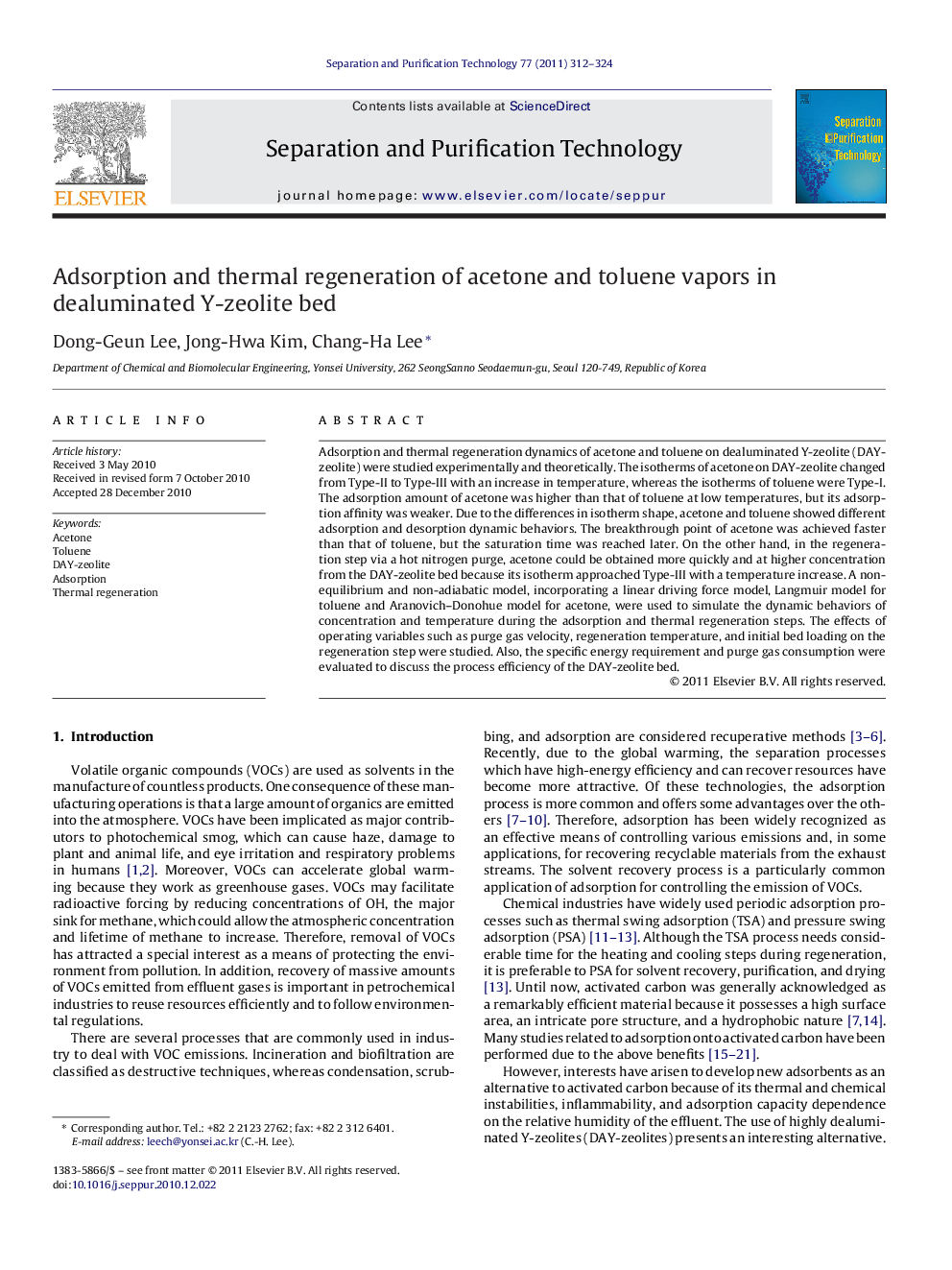| کد مقاله | کد نشریه | سال انتشار | مقاله انگلیسی | نسخه تمام متن |
|---|---|---|---|---|
| 642785 | 884338 | 2011 | 13 صفحه PDF | دانلود رایگان |

Adsorption and thermal regeneration dynamics of acetone and toluene on dealuminated Y-zeolite (DAY-zeolite) were studied experimentally and theoretically. The isotherms of acetone on DAY-zeolite changed from Type-II to Type-III with an increase in temperature, whereas the isotherms of toluene were Type-I. The adsorption amount of acetone was higher than that of toluene at low temperatures, but its adsorption affinity was weaker. Due to the differences in isotherm shape, acetone and toluene showed different adsorption and desorption dynamic behaviors. The breakthrough point of acetone was achieved faster than that of toluene, but the saturation time was reached later. On the other hand, in the regeneration step via a hot nitrogen purge, acetone could be obtained more quickly and at higher concentration from the DAY-zeolite bed because its isotherm approached Type-III with a temperature increase. A non-equilibrium and non-adiabatic model, incorporating a linear driving force model, Langmuir model for toluene and Aranovich–Donohue model for acetone, were used to simulate the dynamic behaviors of concentration and temperature during the adsorption and thermal regeneration steps. The effects of operating variables such as purge gas velocity, regeneration temperature, and initial bed loading on the regeneration step were studied. Also, the specific energy requirement and purge gas consumption were evaluated to discuss the process efficiency of the DAY-zeolite bed.
Figure optionsDownload as PowerPoint slideResearch highlights▶ Adsorptions and regenerations of acetone and toluene on DAY-zeolite. ▶ The isotherm of acetone changed from Type-II to type-III with increasing temperature, while that of toluene was Type-I. ▶ Acetone showed stronger adsorbate-adsorbate interaction. ▶ Purge gas velocity and temperature affected regeneration curve, while the effect of initial bed loading was negligible.
Journal: Separation and Purification Technology - Volume 77, Issue 3, 4 March 2011, Pages 312–324